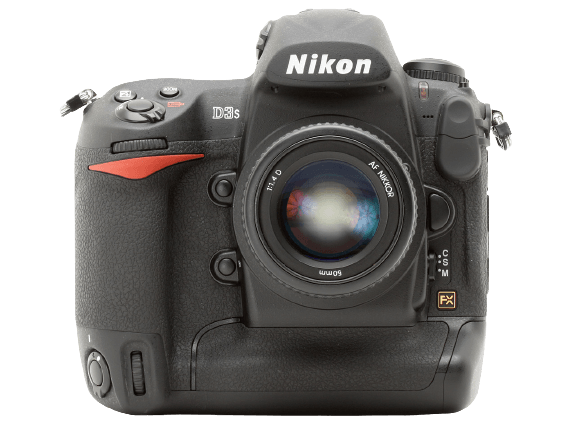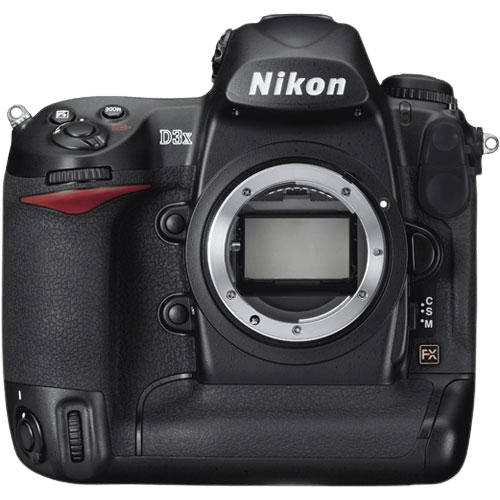Nikon D3s vs D3X Comparison
Nikon D3s

Nikon D3X

The Nikon D3X takes the lead with a score of 64/100, while the Nikon D3s trails behind at 57/100. Both cameras are DSLR models, released in 2008 and 2009, respectively. They share the same dimensions, measuring 160 x 157 x 88mm. The D3X has a slightly higher weight at 1260g, compared to the D3s at 1240g.
The D3X excels with a higher score, mainly due to its superior performance in various aspects. However, the D3s does have some advantages, such as a lower launch price of $5510, compared to the D3X’s $9172, and a slightly lighter weight.
While both cameras have their merits, the Nikon D3X ultimately stands out as the better choice due to its higher score, indicating better overall performance. The Nikon D3s, though, remains a viable option for those seeking a more budget-friendly and lighter camera.
Nikon D3s vs D3X Overview and Optics
The Nikon D3X wins the optics comparison with a score of 65/100, while the Nikon D3s scores 55/100. Both cameras share several optical specifications, including a CMOS sensor, Expeed processor, full-frame sensor size, Nikon F FX lens mount, and no image stabilization.
The Nikon D3X outperforms the D3s in certain aspects. With a higher megapixel count of 24.5 compared to the D3s’s 12.1, the D3X allows for more detailed and larger prints. Additionally, the D3X has a higher DXOMARK sensor score of 88, compared to the D3s’s score of 82. This indicates that the D3X generally has better image quality, dynamic range, and color depth.
On the other hand, the Nikon D3s has some advantages over the D3X. With a shooting speed of 11 frames per second (fps), the D3s doubles the D3X’s shooting speed of 5 fps. This makes the D3s more suitable for action and sports photography, where capturing fast-moving subjects is crucial.
To conclude, the Nikon D3X is the winner in terms of optics, with superior image quality and a higher megapixel count. However, the Nikon D3s excels in shooting speed, making it better suited for fast-paced photography. Ultimately, the choice between these two cameras depends on the specific needs and preferences of the photographer.
Nikon D3s vs D3X Video Performance
When discussing the video capabilities of the Nikon D3s and Nikon D3X, it is important to mention that neither of these cameras possess video functionality. As a result, there is no difference between the two cameras in this aspect. Both the Nikon D3s and Nikon D3X focus on their respective strengths in photography, rather than offering video recording features.
Nikon D3s vs D3X Features and Benefits
The Nikon D3s and the Nikon D3X both have a feature score of 54/100, making them equal in this aspect. They share several common specifications, including a 3-inch screen size, lack of touchscreen, absence of a flip screen, and no GPS, WIFI, or Bluetooth capabilities.
Despite the identical feature scores, the Nikon D3s has some advantages over the Nikon D3X. Its screen resolution is slightly higher at 921,000 dots compared to the D3X’s 920,000 dots. This difference provides the D3s with a marginally clearer and sharper display for better image review and menu navigation.
On the other hand, the Nikon D3X also has its merits. Although the screen resolution is slightly lower, the difference is minimal and may not be noticeable in everyday use. The D3X matches the D3s in other aspects, such as screen size and lack of additional features like GPS, WIFI, and Bluetooth. These similarities make the D3X a viable alternative for photographers who prioritize these specifications.
Given that both cameras have the same feature score and share many specifications, the choice between the Nikon D3s and the Nikon D3X ultimately depends on personal preference and the importance of screen resolution. The D3s offers a slightly better display, while the D3X remains a strong contender in other aspects. Photographers must weigh the importance of these features to determine the best fit for their needs.
Nikon D3s vs D3X Storage and Battery
The Nikon D3s and Nikon D3X both score 87/100 in storage and battery, indicating no clear winner in this category. Both cameras have two memory card slots and accept CompactFlash (Type I) and UDMA cards. Additionally, neither camera has USB charging capabilities.
The D3X has a slightly longer battery life, with 4400 shots compared to the D3s’s 4200 shots. Both cameras utilize the same EN-EL4a battery type. This advantage in battery life makes the D3X more suitable for extended shooting sessions without needing to replace or recharge the battery.
However, the D3s accepts only Type I CompactFlash cards, while the D3X is compatible with both Type I and Type II cards. This compatibility difference allows the D3X to have more flexibility when it comes to memory card options.
As both cameras have the same storage and battery score, it is evident that their differences are minimal. The D3X has a slight edge in battery life and memory card compatibility, but these factors alone may not be significant enough to determine the better camera for every user. Ultimately, the choice between the Nikon D3s and Nikon D3X will depend on individual preferences and specific use cases.
Nikon D3s vs D3X – Our Verdict
Are you still undecided about which camera is right for you? Have a look at these popular comparisons that feature the Nikon D3s or the Nikon D3X:

